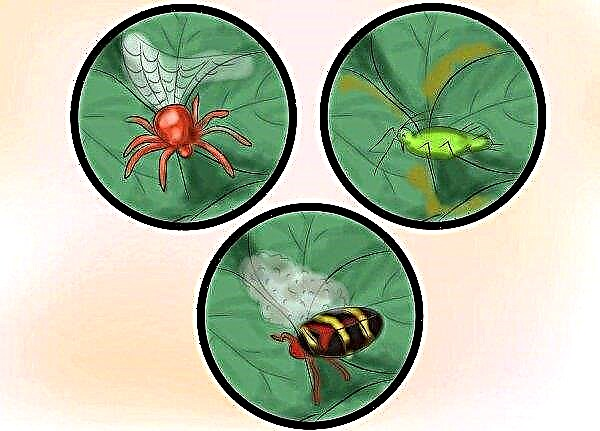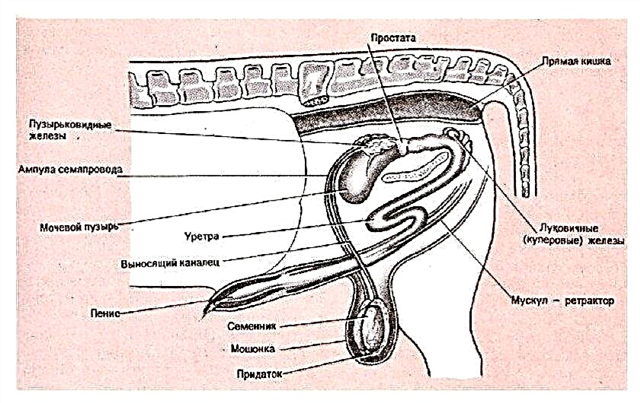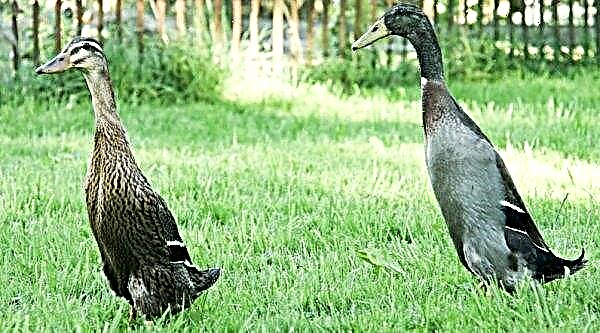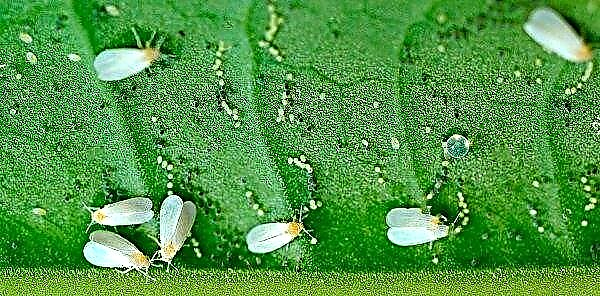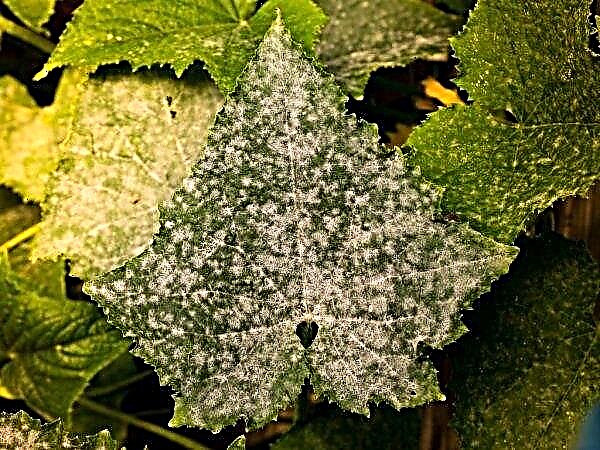There are many types of hives, each of which has its own advantages and disadvantages. They have various designs, sizes, arrangement, roominess. In this article, we will talk about the classic, long-won trust hive lounger on a narrow high frame, also known as Ukrainian.
Design features
Ukrainian beehive is one of the most popular among beekeepers. His device is the closest to the natural living conditions of bees, so they feel comfortable in it. The prototype of the Ukrainian hive was decks - houses for honey insects, which were made from logs by the inhabitants of Central Europe until the 19th century. The first hive-lounger, which was later called Ukrainian, was made in the 1870s. Pole Casimir Levitsky. Today, several simplified designs are used.
The horizontal beehive lounger on a high frame is a simple rectangular design in which from 16 to 24 frames are placed. It has a roof and a bottom that cannot be removed. If necessary, it is separated by diaphragms, and also additionally insulated. The main generally accepted frame sizes are 435 × 300 mm.
Did you know? Domestication of bees occurred about 5-6 thousand years ago. People settled honey insects in primitive hives made of twigs and boards, or in clay vessels.
- The design of the sunbed has several advantages:
- ease of use;
- comfortable keeping of bees at any time of the year;
- minimal human intervention in the activity of honey insects;
- the possibility of keeping in one hive two bee families or one family with a nucleus;
- ease of manufacture with your own hands;
- lack of additional extensions;
- one frame size.
- Among the minuses of the described construction is worth mentioning:
- the ability to use only in small stationary apiaries;
- large dimensions;
- non-separable design;
- inconvenience when placed in the winter hut;
- insufficient air exchange during the wintering period;
- difficulty building families.
How to make a Ukrainian hive with your own hands
A hive sunbed is easy to make with your own hands. This will not require any special skills or sophisticated tools.
Necessary tools for making
To make a sunbed, you need to prepare the following tools and materials:
- 2 cm thick board, 84 cm long and 14.5 cm wide - 2 pcs .;
- 4 × 84 × 18.5 cm board - 4 pcs.;
- 4 × 36.5 × 13.9 cm board - 8 pcs.;
- 4 × 81 × 15 cm board - 3 pcs.;
- board 3 × 40 × 7 cm - 1 pc.;
- board 2 × 86 × 20 cm - 2 pcs.;
- 2 × 39.5 × 20 cm board - 2 pcs.;
- boards for the roof 1.5 × 96 × 13 cm - 4 pcs.;
- rail 1.3 × 84 × 3 cm - 8 pcs.;
- hammer;
- nails
- stuntgebel;
- selector;
- plane;
- wooden dowels;
- nails 10 cm.

Drawings and Dimensions
The following is an instruction for manufacturing a structure with dimensions of 50.7 × 68.6 × 38.1 cm (height × length × width). The thickness of the end and back walls in it is 3.3 cm, the sidewalls are 2.8 cm.
To build a hive, the following steps must be taken:
Important! It is necessary to ensure that there are no gaps or openings in the partition in order to prevent the entry of bees from one compartment to another.
- Make an end by connecting two boards with a width of 18.5 cm and one board with a width of 14.5 cm into a dowel, flap or rail.
- At the end, cut 2 lower slots 20 cm long, 1 cm high.
- On the segment between the lower notches, in the center, step back 1.2 cm from the upper edge, make the upper notches with a diameter of 2.5 cm.
- Make the back of the boards 84 × 18.5 cm by connecting them into a dowel or rail. If everything is done correctly, then the width of the wall will be more than the width of the end by 4 cm.
- Cut the lower notch 10 cm long and 1 cm high at a distance of 4 cm from the bottom edge and 9 cm from the end.
- To make the side parts by connecting 4 boards with dimensions of 36.5 × 13.9 cm into the tongue and rail.
- Knock down the housing.
- Connect the bottom of the three boards 81 × 15 cm into the tongue and rail. Combine them with fenders on the underside.
- Insert the bottom into the quarters of the case and nail them with nails, using 4 pieces on each board.
- Round off the protruding part by making a cone.
- Nail the board, which will serve as a separator of the slots, from the outside of the end wall and the part of the bottom on which there is a ledge.
- Attach guide bars to the upper edge of the slots.
- Insert 2 cork liners into the guide bars.
- Attach a support block to the bottom edge of the rear bar.
- Attach a guide bar above the bar.
- Insert cage liners between the support and guide blocks.
- Attach the hinge board using the hinges.
- To make a single-pitched roof using the harness and the roof guard.
- Cover the roof with tin, roofing paper, roofing felt or rubber coating.
- Make 3 ventilation holes in the sides of the harness, measuring 2 cm across.
- To fence openings for ventilation from the inside with grilles, and from the outside to cover with turntables.
Video: Ukrainian hive
Hive equipment inside
In the lounger case on the end and rear walls, cuts should be made 10 mm wide and 6 mm wide for inserting the dividing wall from plywood.
The selected number of frames is attached using a special pressure rail. Frames should be made with dimensions of 30 × 43.5 cm.
Rules for keeping bees in Ukrainian hives
In hive-loungers with narrow frames with two families or a family with a nucleus in the spring, it is necessary to provide them with a lot of food - about 8-10 kg per family, and the nests are well insulated with pillows, mats, paper.
It is important to take measures so that members of one family do not end up in another. For this, strong families are released first. After they return to the hive, they close the doors and release the members of a weak family on spring summer.
The socket is expanded once. The extension should be made at the time of laying the uterus of eggs. The procedure is carried out by light brown cells. In the presence of 7-8 hundred broods, all cells must be shifted to the wall located on the opposite side of the notch. The space that has been freed up should be filled with frames of land and wax in an amount of 5 or more. To restore the normal position of the nest, honey insects will build a honeycomb on a wax, and they will not have time to dig. New rebuilt cells are placed closer to the center of the nest. Old honeycombs gradually move closer to the edges.
Important! Before inserting frames with sushi, it is necessary to wet them in warm water.
To avoid swarming, it is necessary to divide the nest into 2 halves with two to three frames with land. Having noticed this, the uterus will try to reconnect the nest, filling the cells with eggs. At a honey collection level exceeding 2 kg, the hive is supplemented with an extension with 10–20 frames. When it becomes crowded in the nest, the family should be put in a separate hive.
Tips from experienced beekeepers
To keep the bees in Ukrainian hives, deckchairs comfortable for both the owner and insects, you should use the recommendations of experienced beekeepers:
- Expand 2-3 times: with a 6-7 framework with brood, deliver 2 frames with honey and 2 with artificial wax; after filling, add 4-5 frames, 3 of which with wax; if necessary, add the required number of frames before the honey collection.
- Expansion of the nest by dividing it into 2 parts should be done only in a strong family and in the absence of the threat of cold weather.
- Before the main honey collection, it is necessary to rearrange the frames by concentrating all the frames with an open brood and a uterus near the letok, and honeycombs with a printed brood - in the depth of the nest.
- It is not necessary to equip the hives with extensions if the family began to swarm and laid queen cells on the combs.
- To preserve labor during the late honey collection, it is necessary to form a temporary layering. They resort to formation after the family builds up 11-12 frames, 8-9 of which will brood.
- To prevent swarming, you need to use various methods: helper queens, Chaikin's method, loading bees with work, etc.

So, Ukrainian hives are simple structures for keeping two bee families or one family with a nucleus. They are convenient to use for the beekeeper and comfortable for the stay of bees.
Did you know? The most ancient bee remains found by paleontologists today date back to a period of 100 million years ago. They were dug up in Burma. The insect was a transitional form from a predator wasp to a pollinating bee.

